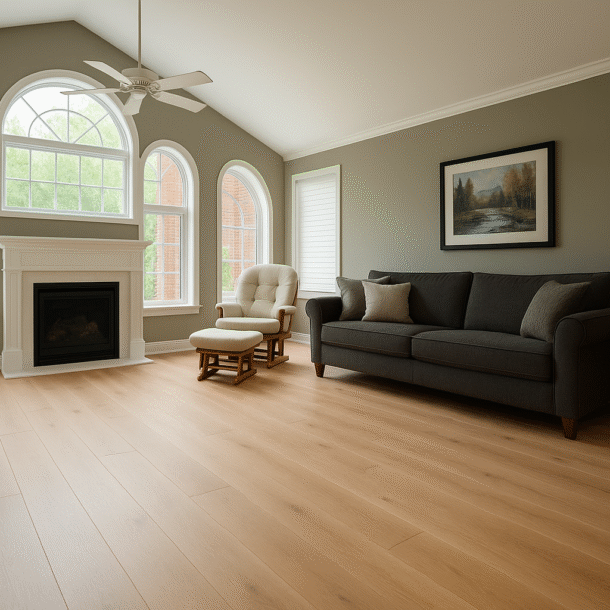

Close


Open-concept living is a popular renovation trend that makes homes feel larger, brighter, and more inviting. One of the most effective ways to achieve this is by removing interior walls that separate rooms—most commonly between the kitchen and living or dining areas. However, this is not a job to rush into. If the wall is load-bearing, its removal must comply with structural requirements under the Ontario Building Code (OBC).
This article will walk you through the key steps and code considerations when removing a wall to create more open space, including how to tell whether a wall is structural, and what the law requires if it is.
Removing a wall can:
Homeowners often complement the new open space with additions like kitchen islands, new flooring, or ceiling treatments to further enhance the effect.
Before demolition, it’s critical to identify whether the wall in question is load-bearing—that is, it supports the structure above it (like upper floors, roof trusses, or ceiling joists). Removing such a wall without proper structural support can lead to catastrophic failure.
How to identify a load-bearing wall:
When in doubt, hire a structural engineer or qualified contractor to evaluate it.
If the wall is non-load-bearing, removal is relatively straightforward and may not require a permit (though it’s always wise to check with your local building department).
If the wall is load-bearing, the following apply under the Ontario Building Code (OBC):
Even though DIY renovations are popular, structural changes are not a weekend project. Hire:
Opening up your living space by removing a wall can completely transform your home—but it must be done safely and legally. Always check if the wall is structural, get professional input, and follow the Ontario Building Code to ensure your renovation not only looks great but also protects the integrity of your home.
If you’re located in Guelph, Kitchener, Waterloo, or Cambridge, SAMandREZ offers complete design-and-build services for open-concept renovations—including structural wall removal, beam installation, flooring upgrades, and kitchen remodelling—all in compliance with Ontario’s strict building standards.
In the Ontario Building Code (OBC), wall removal—especially if it involves load-bearing walls—is covered under several key sections related to structural requirements, alterations, and permit compliance. While the OBC does not have a section titled “wall removal,” it regulates such work through broader structural provisions. Here’s a summary of the most relevant code references:
OBC 1.3.1.1(1): A building permit is required for any structural alteration to a building.
Part 4 – Structural Design (for all buildings, including complex structures):
Article 4.1.3.1: Loads and effects – the building must be designed to resist dead loads (like walls and floors) and live loads (people, furniture, etc.).
Beam sizing, point load transfer, and support conditions must meet engineered standards.
Part 9 – Housing and Small Buildings (for houses and small residential buildings under 600 m²):
Article 9.23.10.1: Lintels and beams must be designed to carry all loads above openings.
Table 9.23.15.1.A & 9.23.15.2: Provide allowable spans and beam sizing for common lumber or engineered wood products (LVL, glulam, etc.).
Article 9.23.8.3: Joist bearing – minimum bearing requirements for structural supports (typically at least 89 mm).
If a new beam and posts are used to replace the wall, the loads must be transferred down to the foundation:
Article 9.15.4.2: Foundations must support loads imposed by posts or beams above.
Article 9.17.4.1: Bearing support must be continuous to footings or foundation walls.
If the wall being removed is part of a fire separation (e.g., between units in a duplex or row house):
Article 9.10.9.14: Fire separation integrity must be maintained.
Equivalent protection must be provided elsewhere in the structure.
If you’re removing a load-bearing wall in Ontario:
You must obtain a permit and provide stamped structural drawings (OBC Div C, 1.3.1.1).
The new beam/post system must be designed to meet OBC Part 4 or 9.
Load transfer must be properly supported down to footings.
You may need to address fire separation and sound transmission requirements.
Great question. In the Ontario Building Code (OBC), non-load-bearing partition walls (often called separation walls or interior partitions) are treated differently from structural walls because they do not support structural loads such as floors, roofs, or upper walls. Here’s what the OBC says or implies about such walls:
These walls:
Serve as room dividers, not structural elements.
Can be removed without affecting the structural integrity of the building.
Often do not require a permit for removal, unless they affect other systems (e.g., plumbing, electrical, fire safety).
The OBC states that building permits are not required for non-structural alterations unless they affect life safety systems.
You do NOT need a permit if:
The wall is not load-bearing
It is not part of a fire separation
It does not contain plumbing, electrical, or HVAC
You are not changing room use, occupancy, or means of egress
Non-load-bearing partitions are governed mainly by standard framing rules:
OBC 9.23.5.1: Non-load-bearing partitions must meet minimum stud sizing and spacing.
Typically framed using 2×3 or 2×4 studs, often at 400 mm or 600 mm centers.
No special lintel or beam sizing is required above doorways or openings unless supporting weight.
If the wall forms part of a required fire separation—e.g., between suites in a duplex or a wall next to a furnace room—it cannot be removed without providing an equivalent alternative.
In such cases, removal becomes a code violation without proper approval.
You can usually remove a separation wall without a permit in Ontario if all of the following are true:
Lorem ipsum dolor sit amet, consectetur adipiscing elit. Ut elit tellus, luctus nec ullamcorper mattis, pulvinar dapibus leo.
78 Summit Ridge Dr,
Guelph, ON N1E 0B8
info@SAMandREZ.com
(519) 741-7140
Monday-Friday, 9am – 5pm
Saturday and Sunday, 9am – 4pm
“Building your own home is about desire, and fantasy. But it’s achievable.
Anyone can do it.”